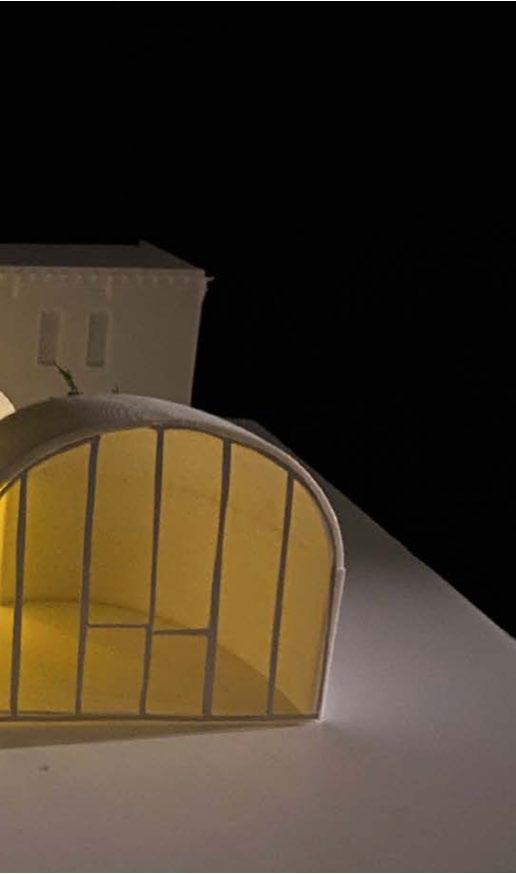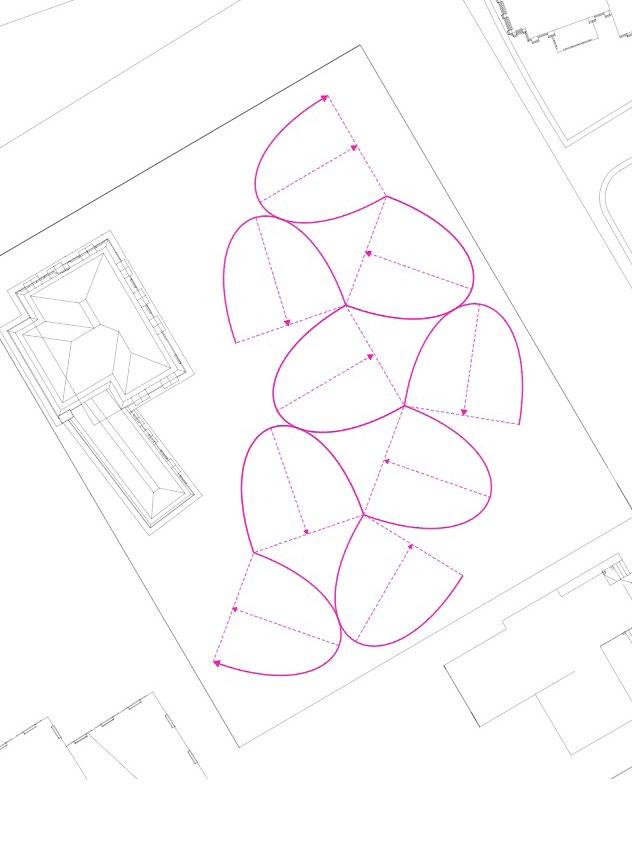Adrian Silva Design Portfolio
Adrian Silva
1 (308) 631-3188
as112@princeton.edu
305 Malcolm X Blvd, 3F Brooklyn, NY 11233

Adrian Silva
1 (308) 631-3188
as112@princeton.edu
305 Malcolm X Blvd, 3F Brooklyn, NY 11233
HDR Architecture
Design Principal: Tom Trenolone
2020
This design investigation sought out new ways of thinking about building typologies, their related programmatic elements, and their adjacency to one another. We knew we needed to challenge conventional concepts in order to create a thought-provoking prototype concept that could transform this community - and that could be applied to other rural communities as well.
Our solution: a mixed-use destination with health and wellness as the foundation that serves to generate the population density needed to create an enlivened town center. This town center, in turn, is the key to fostering economic and social well-being.
We envision reusing and re-purposing existing main street structures, and adding new spaces within the footprint to further activate the space and attract residents and visitors. All medical/clinical services are consolidated, and skilled (long-term care) nursing elements added by moving the retirement facility currently on the town’s outskirts back to the town proper. New elements (an auditorium/ meeting/theater space, community hall, swimming pool and basketball courts) are introduced to encourage increased traffic and engagement, which in turn provides incentive for traditional services such as pharmacy and café/dining to return to the town’s main artery.
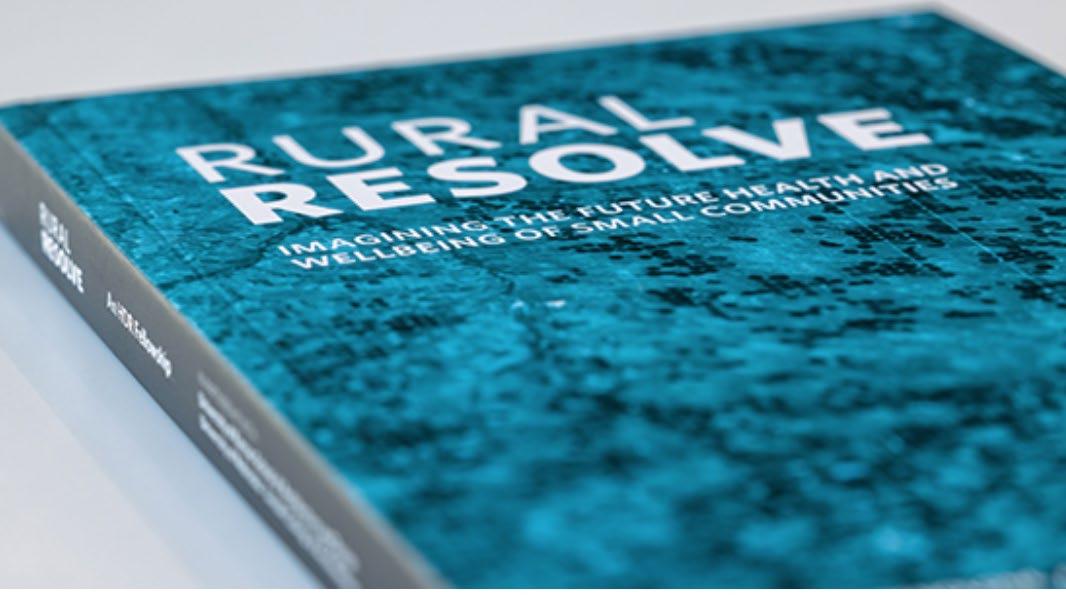
In addition to working on the schematic design and representation for the project, I was able to lead the creative direction and design for the reasearch book Rural Resolve. This included designing the book layout, cover, diagrams, and editing.









Princeton School of Architecture
ARC 503 Integrated Building Studio
Professor: Paul Lewis, Guy NordensonFall 2022

This studio explored the implications of circular building materials from a series of overlapped trajectories. The program of the project is a prototype for a circular building material warehouse, showroom, and testing facility. The proposal is focused on using biogenic materials to produce a material depot. Circular economies foreground certain types of materials and objects over others, and reveal unintended consequences of conventional joints (the problem with adhesives) and typical construction. The building is seen as a material bank, and explores the role of design for disassembly, the importance of using biogenic and earthen materials to minimize or sequester carbon, decrease toxicity and advance generative cycles through building.



Two different material assemblies are the focus of the building: 3D printing of loam-based material and wood stick framing. One is heavy and must be extruded incrementally layer by layer, while the other tends toward light filigree assemblies. Where the technology behind 3D printing 1:1 is still emerging, stick framing has centuries of precedents. The structure is a dialogue between what is 3D printed from the ground up and the longer span wood roof structures. These two materials, one harvested locally from the ground, and the other acquired from re-purposed lumber will be augmented by other circular building material ready-mades, as well as other plant-based materials. The roof can accomodate different truss systems. This roof twists in different directions, responding to sunlight on the site, and to interior conditions. The roof is treated as part of the landscape, and the walls embrace the site, while offering flexibility between inteiror and exterior spaces.









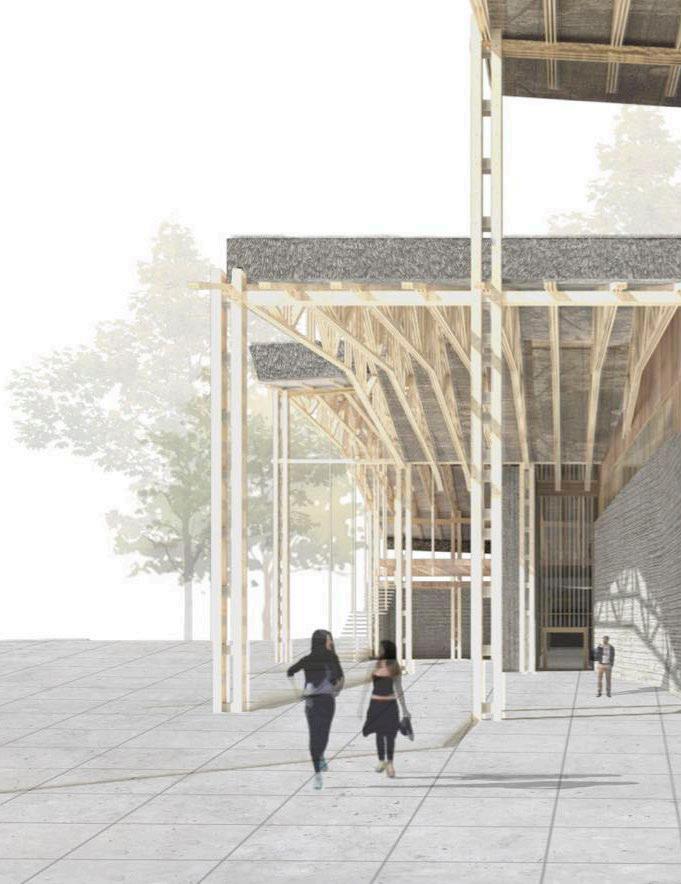




Princeton School of Architecture
ARC 513 Contemporary Facade Design
Completed by Team: Adrian Silva, Michael Lee, Priscilla Zhang
Professor: Sameer Kumar Spring 2023

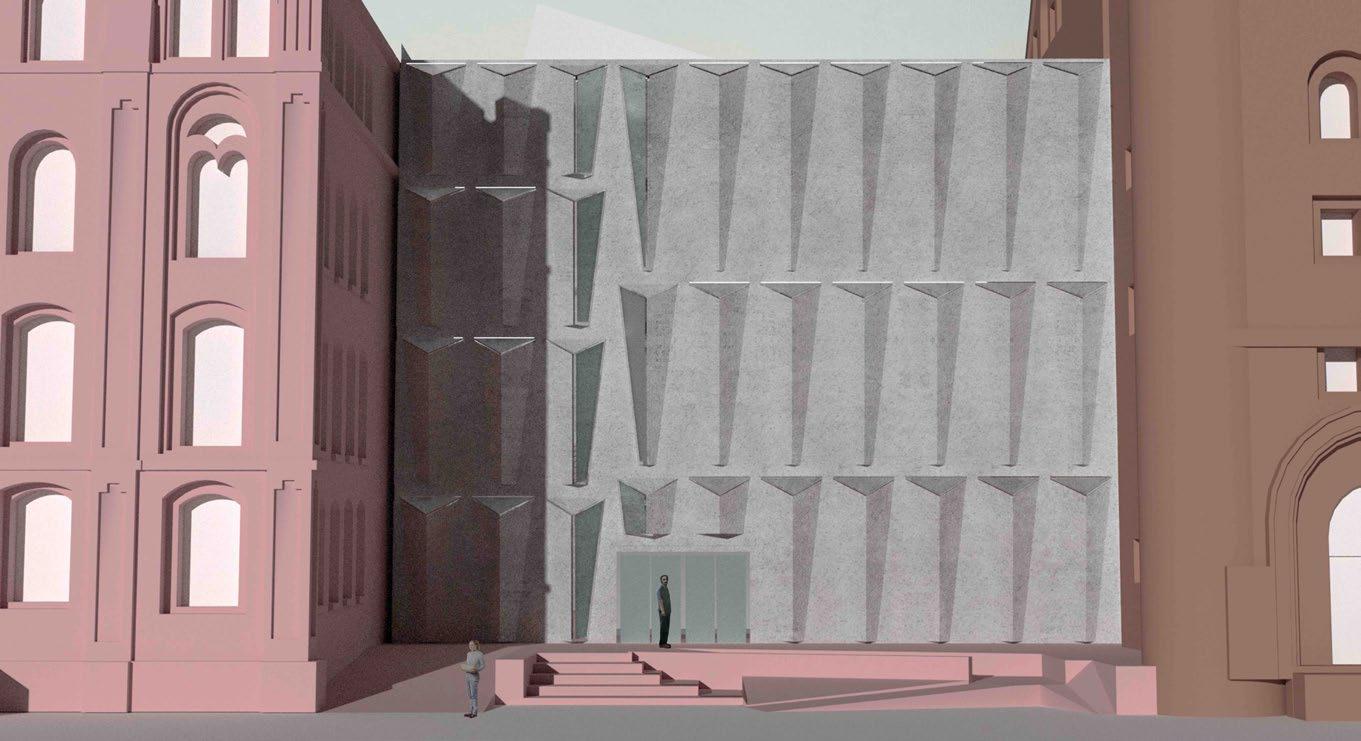




Princeton School of Architecture
ARC 504 Integrated Building Studio
Professor: Matthew Au, Mira Henry
Project Team: Adrian Silva & Michael Lee Spring 2022
Shell and systems render

For 504 Integrated Studio, each group was tasked with applying the narratives, qualities, and ideas of performance and assembly to a small community theatre and garden on a site in Jefferson Park in South Los Angeles. The building systems developed in earlier assignments are scaled, refined, and adapted to this compact building to produce and manage a range of environmental conditions including thermal, acoustic, and visual qualities. These qualities are leveraged in the project to support the conceptual and cultural markers developed in our tableau’s. Additionally, the design proposal asks: what does it mean to move into the neighborhood, with its rich history and quickly changing milieu? How does the building perform, both technically and culturally?







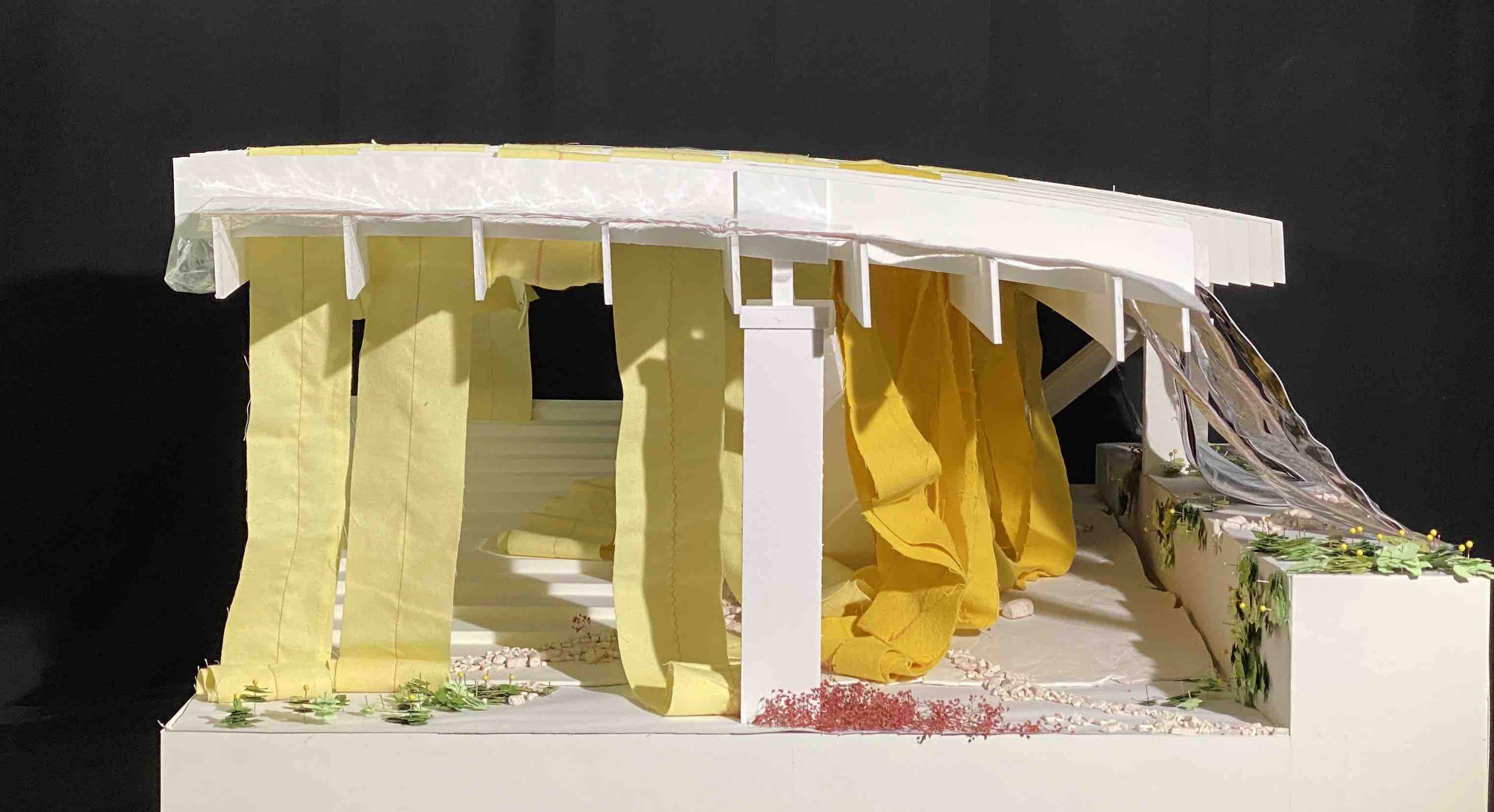


Princeton School of Architecture
ARC 501 Core I Studio
Professor: Michael Meredith
Fall 2020

The project addresses a selected community we worked with, and how we define the needs of that community. Community research and engagement was central in this project, where the main goal was to answer questions like: How can you address a community with a building? What agency does architecture have? What makes an inclusive architecture? The services I included were a health center, large communal meeting space, private small scale community meeting rooms, community pin-up board, a kitchen, restrooms, garden, etc. The site is Parking Lot 9, Princeton NJ, 08540.
